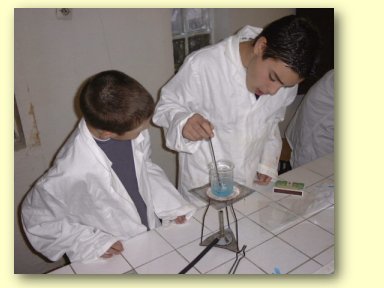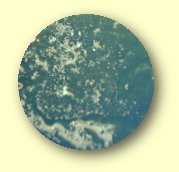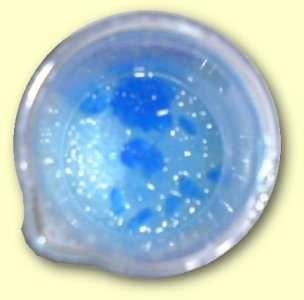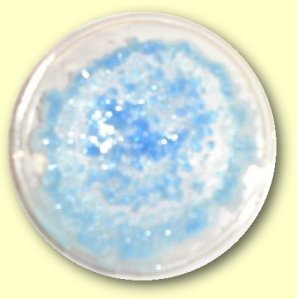

Observing Crystals
Here are some photos of the experiment we did in class growing crystals. The first photo shows the apparatus we used. The second shows one of the solutes, copper (II) sulfate, used to make the saturated solution.






The middle two photos show students hard at work and the last two show
the final steps of the experiment: pouring out the saturated solution and
then watching crystals form.
Results:
One week later, here are the results:


Some experiments did not form separate crystals:
| Questions to be answered for homework:
Reminder: Any work you give in should be your own. Answer these questions by yourself, not in pairs or in teams. 1. At the end of the experiment, one week later, the solutions should have formed crystals. The crystals in the beaker took longer to form than the ones in the little dish (either a watchglass or an aluminum cup) because there was more liquid to crystalize in the beaker. What difference can be seen between the crystals in the two containers? (Do not take into consideration those experiments which formed a light blue paste - only discuss the ones which formed distinct blue copper sulfate crystals and transparent colorless aluminum potassium sulfate crystals.) 2. Write a conclusion based on the observation you made in question 1. In other words, what can be said about the relationship between the size of the crystals formed and the time it took them to form? 3. For many groups, the experiment did not work as expected and no crystals formed - only a light blue paste resulted. When unexpected results are produced, scientists look for a source of error. Suggest 2 sources of error which are unique to this experiment. In other words, do not say things such as "the Bunsen burner was not adjusted correctly" because that could be true in any experiment. Please note that there are many possible acceptable answers to this question, but you should only write two. 4. Give a practical solution to each of the sources of error you explained in question 3. "Practical" means something which does not require investing in millions of francs of high-tech equipment. |
If you would like to send your homework to Mr. Damon by e-mail, click here for a complete set of instructions on how to do that.
This page was last updated on October 19th, 1999.
![]()
Comments? Questions? Write me an e-mail at this address: damon@chez.com
.
Do not forget to put your NAME and
CLASS in any e-mail you send me. If
you want me to respond by e-mail, indicate your e-mail address, please.